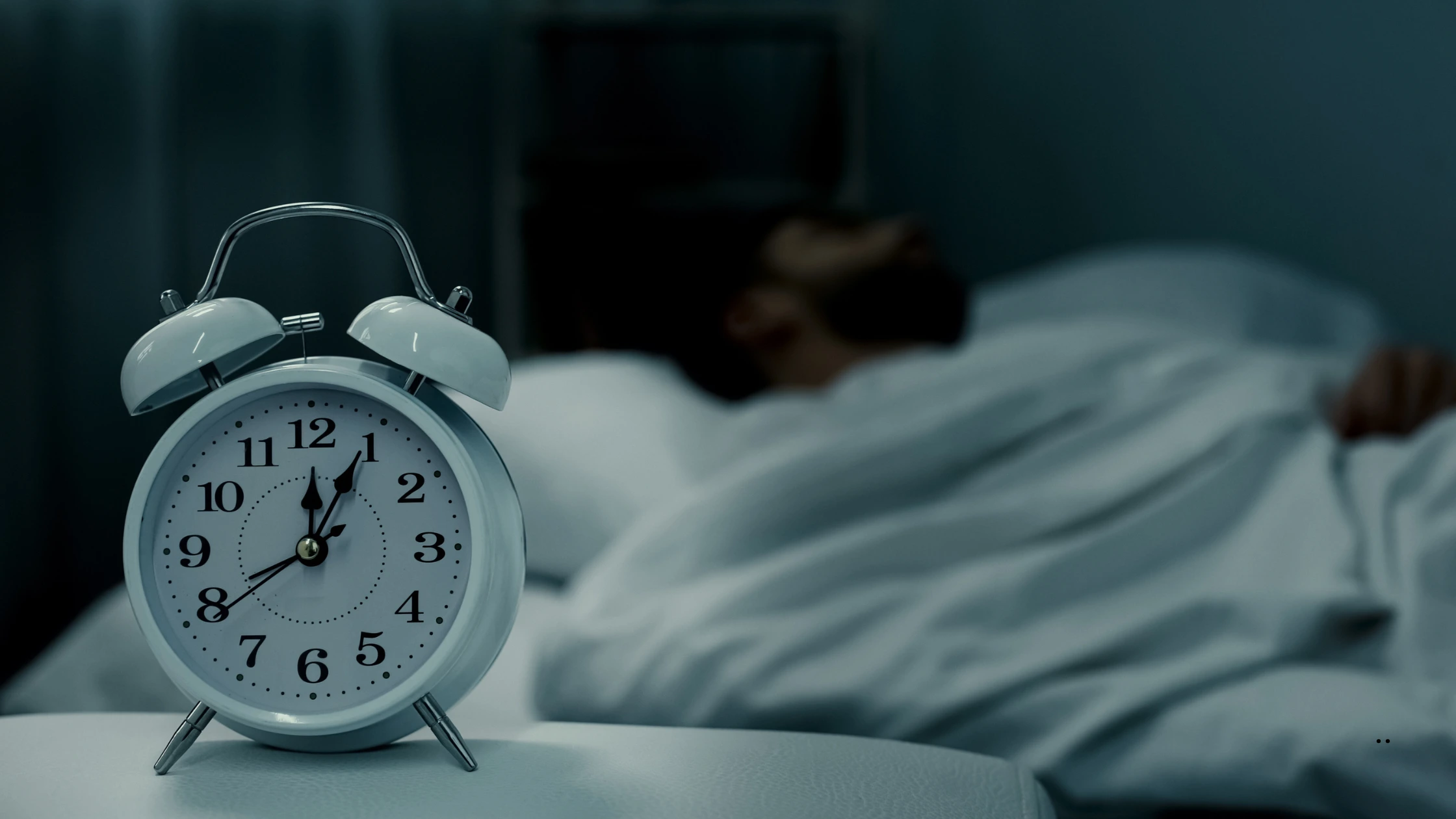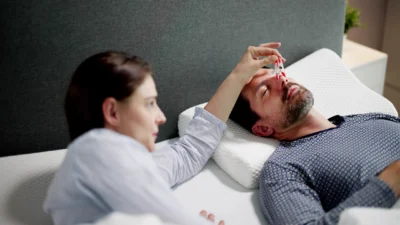7 Common Sleep Disorders and How to Overcome Them

1. Insomnia
What is Insomnia?
Insomnia is one of the most common sleep disorders, characterized by difficulty falling asleep, staying asleep, or waking up too early. People with insomnia often feel fatigued throughout the day and may experience irritability, mood swings, and trouble concentrating. It can be acute (short-term) or chronic (long-term), with symptoms lasting for weeks or even months.
How to Overcome Insomnia:
- Cognitive Behavioral Therapy for Insomnia (CBT-I): CBT-I is one of the most effective treatments for insomnia. It helps address negative thoughts and behaviors related to sleep and promotes better sleep habits.
- Sleep Hygiene: Establishing a consistent sleep schedule, creating a calming bedtime routine, and making the sleep environment comfortable (cool, dark, and quiet) can improve sleep quality.
- Limit Stimulants: Avoid caffeine, nicotine, and heavy meals before bedtime. These can interfere with falling asleep and staying asleep.
- Relaxation Techniques: Engage in activities such as deep breathing, progressive muscle relaxation, or meditation to reduce anxiety and stress before bed.
2. Sleep Apnea
What is Sleep Apnea?
Sleep apnea is a serious sleep disorder where breathing repeatedly stops and starts throughout the night. The most common form is obstructive sleep apnea (OSA), where the muscles in the throat relax excessively, causing temporary airway blockages. The interruptions in breathing can lead to fragmented sleep and drops in oxygen levels, which can contribute to fatigue, high blood pressure, heart problems, and other health issues.

How to Overcome Sleep Apnea:
- Continuous Positive Airway Pressure (CPAP): This device is the gold standard for treating moderate to severe sleep apnea. It delivers a continuous stream of air into the nose to keep the airway open during sleep.
- Weight Management: Excess weight, especially around the neck, can contribute to sleep apnea. Losing weight through diet and exercise can significantly reduce symptoms.
- Sleep Positioning: Sleeping on your back can worsen sleep apnea. Sleeping on your side may reduce airway obstruction.
- Avoid Alcohol and Sedatives: These substances relax the muscles in the throat, increasing the likelihood of airway blockage.
3. Restless Legs Syndrome (RLS)
What is Restless Legs Syndrome?
Restless Legs Syndrome (RLS) is a neurological disorder that causes an irresistible urge to move the legs, usually accompanied by uncomfortable sensations. These sensations often occur in the evening or at night, disrupting sleep. RLS can cause significant sleep disturbances, as the discomfort makes it hard to relax or fall asleep.
How to Overcome Restless Legs Syndrome:
- Iron Supplements: Low iron levels can contribute to RLS. A healthcare provider may recommend iron supplements if blood tests show a deficiency.
- Exercise and Stretching: Gentle exercises, like walking or stretching, can help relieve symptoms. However, avoid excessive activity close to bedtime, as it can make symptoms worse.
- Warm or Cool Compresses: Applying a warm or cool compress to the legs may reduce discomfort and help you relax.
- Medications: In severe cases, medications such as dopamine agonists, anticonvulsants, or benzodiazepines may be prescribed to relieve symptoms.
4. Narcolepsy
What is Narcolepsy?
Narcolepsy is a neurological disorder that causes excessive daytime sleepiness, even after a full night’s sleep. People with narcolepsy often experience uncontrollable urges to sleep during the day, and they may have “sleep attacks” that can occur at any time. In addition to daytime sleepiness, narcolepsy can cause vivid hallucinations, sleep paralysis, and disrupted nighttime sleep.
How to Overcome Narcolepsy:
- Medication: Stimulants such as modafinil or amphetamines can help reduce excessive daytime sleepiness. Antidepressants or sodium oxybate may also be prescribed to manage symptoms.
- Sleep Hygiene: Maintaining a consistent sleep schedule, even during the day, can help improve sleep quality and reduce daytime sleepiness.
- Planned Naps: Taking short, scheduled naps during the day can help alleviate symptoms and improve alertness.
- Caffeine and Diet: Limited caffeine intake during the day may help, but avoid caffeine close to bedtime as it can disrupt nighttime sleep.
5. Night Terrors and Sleepwalking
What are Night Terrors and Sleepwalking?
Night terrors are intense episodes of fear, screaming, and physical activity that occur during deep sleep (non-REM). Sleepwalking is another sleep disorder where individuals get up and walk around while still asleep, often with little or no memory of the event. Both conditions can disrupt sleep, causing the individual to feel disoriented or exhausted upon waking.
How to Overcome Night Terrors and Sleepwalking:
- Establish a Relaxing Bedtime Routine: Reducing stress and anxiety before bed can help prevent night terrors and sleepwalking episodes.
- Ensure Safety: If you or a loved one is prone to sleepwalking, make the sleep environment safe by locking doors and windows, removing sharp objects, and using bed rails.
- Medication: In severe cases, medications such as benzodiazepines or antidepressants may be prescribed to help reduce episodes.
- Sleep Schedule: Sticking to a consistent sleep routine can help regulate the sleep cycle and reduce the occurrence of night terrors and sleepwalking.
6. Parasomnias
What are Parasomnias?
Parasomnias are a group of sleep disorders that involve unusual or undesirable physical activities during sleep. These can include behaviors such as sleep talking, sleep eating, or acting out dreams (REM sleep behavior disorder). These disorders are often associated with an underlying condition like stress, anxiety, or sleep deprivation.

How to Overcome Parasomnias:
- Reduce Stress: Practicing relaxation techniques and reducing stress before bedtime can minimize parasomniac episodes.
- Avoid Sleep Deprivation: Make sure to get adequate sleep each night. Lack of sleep can exacerbate parasomnia symptoms.
- Medications: In some cases, medication may be prescribed to help manage parasomnia symptoms, especially if they are severe or lead to injury.
- Create a Safe Sleep Environment: For people who engage in potentially harmful behaviors during parasomnias (like sleepwalking), creating a safe sleep environment can prevent injuries.
7. Shift Work Sleep Disorder
What is Shift Work Sleep Disorder?
Shift Work Sleep Disorder (SWSD) is a condition that affects people who work irregular hours, such as night shifts or rotating shifts. Disrupted sleep patterns, inadequate sleep, and an inability to sleep at appropriate times lead to excessive daytime sleepiness, poor concentration, and difficulty staying awake during work hours.
How to Overcome Shift Work Sleep Disorder:
- Maintain a Consistent Sleep Schedule: Even if your work hours change, try to keep a consistent sleep routine. Aim for 7-9 hours of sleep, and keep your sleep environment as dark and quiet as possible.
- Bright Light Therapy: Exposure to bright light during night shifts can help regulate the body’s circadian rhythm and improve alertness.
- Take Naps: Short naps before or during your shift can improve performance and reduce sleepiness.
- Caffeine Management: Use caffeine strategically to stay alert during shifts but avoid it close to bedtime.
Conclusion
Sleep disorders can significantly impact daily life, but the good news is that most of them are treatable with the right strategies. Whether you’re struggling with insomnia, sleep apnea, or other sleep disturbances, there are practical ways to improve your sleep quality and regain control over your health. If you’re experiencing any of these issues, consider consulting with a healthcare provider to develop a tailored plan for better sleep. By adopting healthy sleep habits, seeking appropriate treatments, and managing underlying health conditions, you can improve your sleep and overall well-being.
